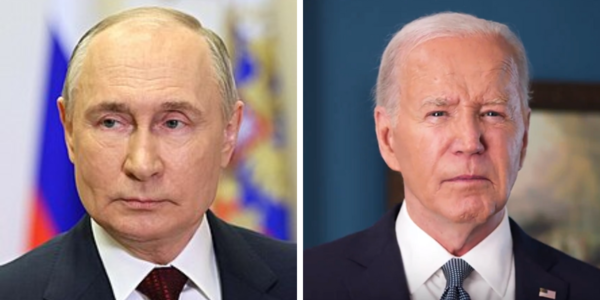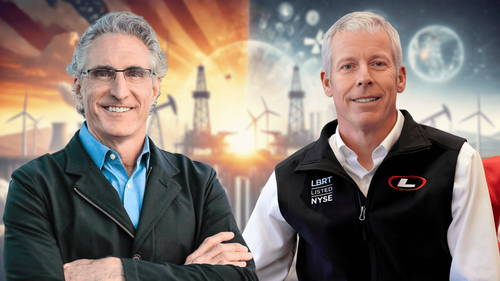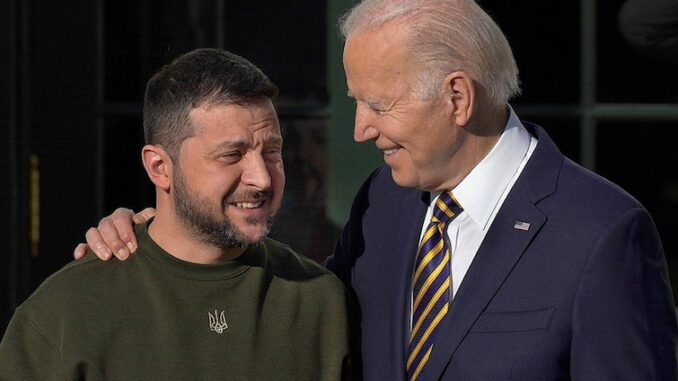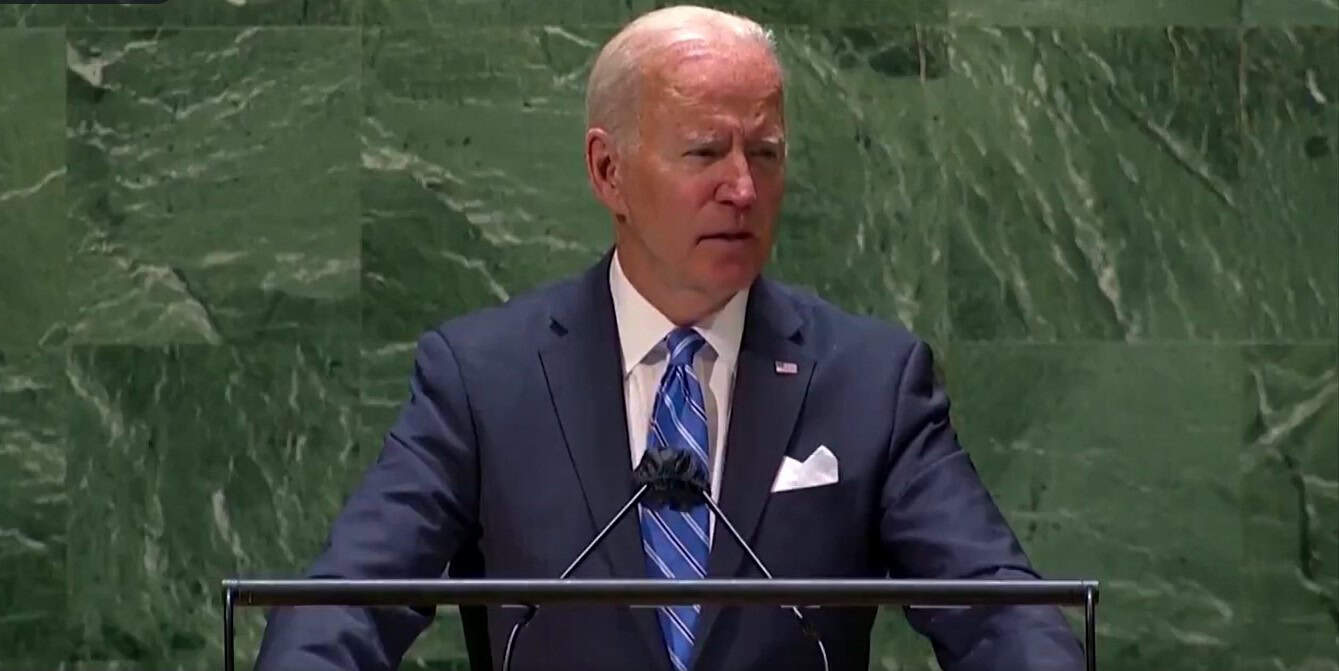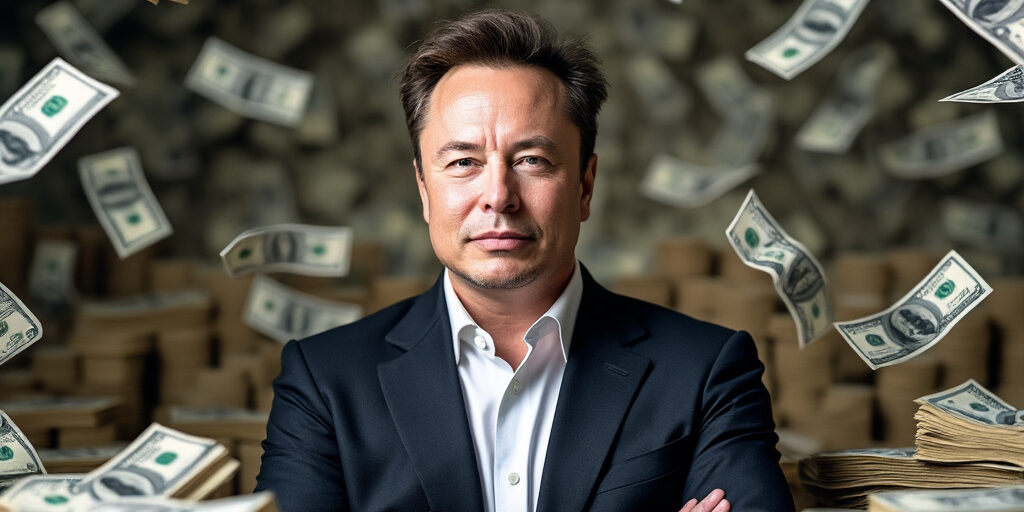‘Antisocial’ behaviors could merit 2-year prison terms in the UK
“Respect orders will give police and councils the powers they need to crack down on repeated antisocial behaviour.”
Ukraine’s ex-top general claims World War III is already underway
“Missiles of North Korean production are already flying into Ukraine, and they openly declare this. Chinese projectiles are blown up in Ukraine, Chinese parts are used in Russian missiles.”
Utility Companies Are Not On Our Side
Utility Companies Are Not On Our Side
Authored by Linnea Leuken & H. Sterlin Burnett via RealClearPolitics,
When electric power was a novel idea and just beginning to be adopted in urban centers, the industry had a Wild West feel to it as multiple companies strung wires, opened power plants, and sold electricity on an unregulated market. Competition was fierce, but state and local governments concluded that the inefficiencies and redundancies endangered the public and imposed higher costs.
So states set up service territories with monopolistic or oligopolistic service providers, who were entrusted with providing reliable power and sufficient reserve for peak periods in return for being guaranteed a profit on rates proposed by the utilities but approved or set by newly established state public utility commissions (PUCs). These commissions were charged with ensuring public utilities served the general public universally within their territory, providing reliable service at reasonable rates.
Much has changed since then. Politicians began to supplant engineers to decide, based on self-interested calculations, what types of power should be favored and disfavored, and what types of appliances and modes of transportation Americans could use. As the 21st century dawned, a new consideration entered the picture: Climate change.
Under the banner of combatting global warming, utilities were at first encouraged and then coerced into adopting plans and policies aimed at achieving net zero emissions of carbon dioxide. The aim of providing reliable, affordable power – the rationale for the electric utilities’ monopolies in the first place – was supplanted by a controversial and partisan political goal. Initially, as states began to push renewable energy mandates, utilities fought back, arguing that prematurely closing reliable power plants, primarily coal-fueled, would increase energy costs, compromise grid reliability, and leave them with millions of dollars in stranded assets.
Politicians addressed those concerns with subsidies and tax credits for renewable power. In addition, they passed on the costs of the expanded grid to ratepayers and taxpayers. Effectively, elected officials and the PUCs, with a wink and a nod, indemnified utilities for power supply failures, allowing utilities to claim that aging grid infrastructure and climate change were to blame for failures rather than the increased percentage of intermittent power added to the grid at their direction.
Today, utilities have enthusiastically embraced the push for renewable (but less reliable) resources, primarily wind and solar. PUCs guarantee a high rate of return for all new power source (wind, solar, and battery) installations, which has resulted in the construction of ever more and bigger wind, solar, and battery facilities. The costlier, the more profitable – regardless of their compromised ability to provide reliable power or the cost impact on residential, commercial, and industrial ratepayers.
A new report from The Heartland Institute demonstrates the significant financial incentives from government and financiers for utilities to turn away from affordable energy sources like natural gas and coal, and even nuclear, and instead aggressively pursue wind and solar in particular. All of this is done in the name of pursuing net zero emissions, which every single major utility company in the country boasts about on their corporate reports and websites. Reliability and affordability come secondary to the decarbonization agenda.
Dominion Energy is a good example, as they are one of the most aggressive movers on climate-focused policy. Dominion CEO Robert Blue speaks excitedly about government-forced transitions to a wind- and solar-dominated grid in interviews. During one interview with a renewable energy podcast, he said:
“[S]ometimes the government needs to focus on outcomes. We’re trying to address a climate crisis, and we are going to need to move quickly to do that.” In the same interview, he expressed enthusiasm about federal policy that would achieve a government-directed transition.
And why wouldn’t he? Dominion, like most utilities, is granted government tax credits and guarantees on returns for investing in large, expensive projects like offshore wind, the most expensive source of electric power. The bigger the project, the bigger the profit with guaranteed returns.
Also, onshore wind companies have received special “take limits” from the Fish and Wildlife Service to kill protected bald eagles and golden eagles, while prosecuting oil companies if birds are injured or killed on their sites.
Net zero policies are not the environmental panacea that climate change activists proclaim. Industrial-scale wind and solar use substantially more land than conventional energy resources, disrupting ecosystems and destroying wildlife habitats in the process.
And despite recent technological advances, wind and solar are still not dispatchable resources, meaning they cannot provide consistent power at all times needed. Refuting claims made by environmentalists and utilities that wind and solar are the cheapest sources of electric power, costs have risen steeply as the use of wind and solar has increased. Customers of Duke Energy in Kentucky, for example, are paying 78% higher rates in the wake of coal-fired plant closings.
Politicians and utilities are pushing for even more electrification for appliances and vehicles despite the fact that Federal Energy Regulatory Commission officials have repeatedly warned in recent years that adding more demand for electric power while replacing reliable power sources with intermittent renewables is destabilizing the power system.
It appears that the utilities prioritize short-term profits over grid reliability or keeping costs reasonable – and the government officials who are supposed to keep them in check are only encouraging them. It doesn’t need to be this way. The U.S. grid was not always this way. Only in recent years, with the obsessive pursuit of net zero, have rolling black and brownouts become so common.
Today, utility companies are sending lobbyists to conservative policymakers in order to convince them that the utilities have our best interests in mind. Their track record tells another story. Meanwhile, Americans have less reliable electricity at higher costs.
Linnea Lueken (llueken@heartland.org, X: @LinneaLueken) is a research fellow with the Arthur B. Robinson Center on Climate and Environmental Policy at The Heartland Institute.
Tyler Durden
Fri, 11/22/2024 – 06:30
Chinese Agent Who Tried To Bribe IRS Against Shen Yun Sentenced To 20 Months in Prison
Chinese Agent Who Tried To Bribe IRS Against Shen Yun Sentenced To 20 Months in Prison
Authored by Eva Fu and Cara Ding via The Epoch Times (emphasis ours),
A Chinese agent who tried to bribe the IRS and manipulate the agency into advancing Beijing’s transnational repression of a U.S. nonprofit has received a 20-month prison sentence.
U.S. citizen John Chen, 72, was a principal actor in a $50,000 bribery scheme under the direction of a Chinese intelligence official to revoke the nonprofit status of New York-based Shen Yun Performing Arts.
Shen Yun has long been on the Chinese regime’s target list. Founded in 2006, the company tours around the world to display the ancient Chinese culture that prevailed before the communist takeover of China, while highlighting the human rights abuses under the regime’s rule. It has often drawn attention to the ongoing persecution of the meditation group Falun Gong.
Chen pleaded guilty in July after reaching a plea deal with prosecutors. He has spent the 16 months since his arrest in May 2023 in detention, and he will spend another four months in federal custody.
He will also forfeit $50,000 and face three years of supervised release after serving the full prison term.
For several months in 2023, Chen had been trying to move a fraudulent whistleblower complaint to help the Chinese Communist Party “topple” Falun Gong, according to court documents. Prosecutors said the whistleblower complaint was “facially deficient” and invoked propaganda rhetoric typical of Chinese authorities.
During those conversations, Chen emphasized that Chinese leadership was “very generous” in financial support for the plan, according to the court filing.
“After this-this-this thing is done,” the court document quoted Chen as saying, “reward for work will surely be given at that time.”
Chen and another co-conspirator, Lin Feng, who served 16 months of detention, paid $5,000 cash bribes to an undercover agent posing as an IRS agent. They promised an additional $50,000 for opening an investigation along with 60 percent of any awards from the complaint if it went through.
It was “a significant bribe,” Assistant U.S. Attorney Michael Lockard said at the sentencing hearing. He noted that the undercover officer didn’t specify an amount.
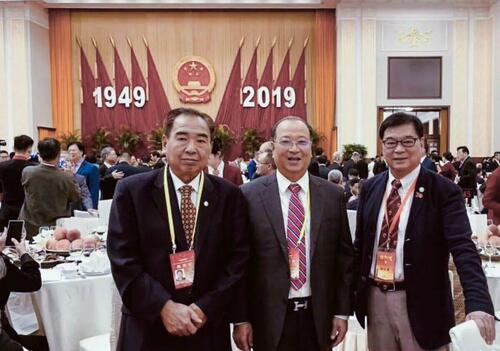
“The defendant chose the amount,” he said.
Both Chen and Lin had traveled to Orange County in upstate New York, where Shen Yun is based, to surveil Falun Gong practitioners there, according to a court filing.
Damian Williams, the U.S. attorney for the Southern District of New York, said the sentencing was a reminder that “the U.S. justice system will hold accountable those who attempt to engage in malicious transnational repression on American soil.”
“John Chen aligned himself with the PRC government and its goals to harass and intimidate the Falun Gong, a long-standing target of PRC repression. In doing so, Chen boldly attempted to bribe an individual he believed to be an IRS agent to corrupt the administration of the U.S. tax code and pervert the IRS whistleblower program,” he said in a statement on Nov. 19. “This Office will not tolerate efforts like this to repress free speech by targeting critics of the PRC in the United States.”

Both Chen’s son and his lawyer declined to comment after walking out of the courtroom.
While Chen’s son, three China-based siblings, two ex-wives, and fiancée have all written letters asking for leniency and describing him as a man who loves the United States, the prosecutors disagreed.
In a Nov. 5 memo, they argued that a 30-month prison sentence—the longest under the sentencing guideline—would be appropriate because of the seriousness of the case and the need to deter criminal conduct, “particularly in cases of a foreign power’s repression of a disfavored group within the borders of the United States.”
“The defendant has no mitigating motives or external factors justifying his offense,” the prosecutors wrote, noting that Chen was “not motivated by poverty” and that there was no evidence of Chinese officials’ pressure.

Prosecutors noted that Chen had repeatedly referred to Chinese officials as his “friends” and that during the bribery scheme, he “called them ‘blood brothers,’ and described how ‘we’—Chen and his PRC Government friends—‘started this fight’ against the founder of the Falun Gong ‘twenty, thirty years ago.’”
The memo displayed photos obtained from Chen’s electronic devices and online accounts showing him at a major military parade in Beijing celebrating the 70th anniversary of Chinese communist rule in 2019. Another photo showed Chen shaking hands with communist leader Xi Jinping.
“Chen was extraordinarily proud of his history with the PRC Government and, in particular, his meeting with Xi,” the memo states, citing a recorded call in which he bragged that he had “climbed, climbed, climbed to this position,” and that “Uncle Xi” met him “three times in 10 years.”
Chen had also featured those three meetings, along with a photo, in a 2020 digital résumé, according to the memo.
Chen was aligned with the Chinese authorities in suppressing Falun Gong and “acted as a full-fledged and enthusiastic participant in the crimes,” the prosecutors said.
“It was his fight,” Lockard said at the sentencing hearing, adding that Chen had tried to use the freedoms he enjoyed in the United States to undermine the country.
Tyler Durden
Thu, 11/21/2024 – 23:25
JACK POSOBIEC: Russia attacks Ukraine with a ‘hypersonic missile’ as US, UK escalate war
“They want your sons and daughters to die in the name of democracy. But in truth, it’s really in the name of profit.”
Visualizing 80 Years Of The Gold-to-Oil Ratio
Visualizing 80 Years Of The Gold-to-Oil Ratio
Gold and oil – two of the most influential commodities on the planet – have a fascinating relationship that has evolved over decades, captured in the gold-to-oil ratio.
The gold-to-oil ratio represents the number of barrels of crude oil equivalent in price to one troy ounce of gold.
It is viewed as an indicator of the health of the global economy, indicating when gold or oil prices are significantly out of balance with each other.
This graphic, via Visual Capitalist’s Niccolo Conte, shows the gold-to-oil ratio since 1946, using data compiled by Macrotrends.
What is the Gold-to-Oil Ratio?
The gold-to-oil ratio expresses the price relationship between gold and West Texas Intermediate (WTI) crude oil. WTI is a grade of crude oil and one of the three primary benchmarks for oil pricing, along with Brent and Dubai Crude.
A high ratio indicates that gold is relatively expensive compared to WTI crude oil, and vice versa. This can indicate periods of outsized demand for energy in the form of crude oil, or periods of monetary uncertainty when there is higher demand for gold.
Below is the gold-to-oil ratio every decade between 1946 and 2024.
During the 1950s and 1960s, fixed gold prices and stable oil prices kept the ratio between 11 and 13 for 20 years.
Since the 1980s, the ratio has typically traded within the range of 6 to 40 with a notable exception: in 2020 when the ratio reached a high of 91.1. The peak in 2020 was driven by COVID-19, which boosted gold prices as a safe haven while oil demand and prices plummeted due to global lockdowns.
In contrast, between 2000 and 2008, oil prices were relatively high compared to gold. During this period, the ratio dropped to nearly 6 but never rose above 16.
When comparing the two commodities, it’s worth remembering that the crude oil market is around 10 times larger than that of gold, making it the largest commodity market in the world.
If you enjoyed this graphic, make sure to check out this graphic that shows the top countries by natural resource value.
Tyler Durden
Thu, 11/21/2024 – 18:00
Russia says US is actively trying to prolong war in Ukraine
“If you look at the trends of the outgoing US administration, they are fully committed to continuing the war in Ukraine and are doing everything they can to do so,” Kremlin spokesperson Dmitry Peskov said.
Jair Bolsonaro, 36 aides indicted by Brazilian police for alleged coup against President Lula
Brazilian police said their findings from the investigation, compiled in a 700-page document, were being delivered to the country’s Supreme Court, overseen by Justice Minister Alexander de Moraes.
The List: Policy Actions To Save America From Globalism Before Time Runs Out
By Brandon Smith It’s been a wild ride. After years of near total leftist control of every significant social and…
The post The List: Policy Actions To Save America From Globalism Before Time Runs Out appeared first on Alt-Market.us.
Trump Appointments Signal Aim To Boost US Energy Investment And Production
Trump Appointments Signal Aim To Boost US Energy Investment And Production
By Ed Crooks of Wood Mackenzie
“Personnel is policy.” That aphorism about the realities of US presidential government was coined by Scot Faulkner, who was director of personnel for Ronald Reagan’s triumphant election campaign in 1980. What he meant was that, while US presidents can do almost anything, they can’t do everything. The day-to-day business of the administration is carried on by appointed officials. And if presidents want to make real progress towards their policy objectives, they need to make sure that their officials are as committed to those goals as they are.
That is why President-elect Donald Trump’s first two picks to be his senior energy officials are particularly significant. There is still a great deal of uncertainty around exactly how energy policy will play out in his second administration. But the announcements he has made give a clear sense of the direction he wants to set and the objectives he wants to achieve during his four-year term.
Last week, President-elect Trump named Chris Wright, the chief executive of oilfield services company Liberty Energy, to be his energy secretary, and Doug Burgum, governor of North Dakota, to be the interior secretary and head of a new National Energy Council at the White House.
The common thread in the thinking on energy expressed by both Wright and Burgum is that they want to boost production of all types of energy, including fossil fuels. They do not deny that human-caused climate change is a real threat that needs to be addressed. But they argue that there are other priorities for policy that are more important and more urgent, and that oil and gas can continue to play the central role in the global energy system into the indefinite future.
If they get to take the reins of energy policy-making under the Trump administration, they will undoubtedly aim to help the oil and gas industry in every way possible. But several low-carbon sectors could also benefit, or at least not be hit as hard as they might have feared.
Meet Chris Wright and Governor Doug Burgum
Announcing their nominations, President-elect Trump said that Wright and Burgum would be working on cutting red tape, enhancing private sector investment and focusing on innovation, with the aim of boosting energy production to cut prices and “win the AI arms race with China (and others)”.
Chris Wright has become one of the highest-profile CEOs in the industry thanks to his tireless advocacy for American energy in general, and oil and gas in particular. He has made his case in a variety of public forums, including YouTube videos and in a 180-page report titled ‘Bettering human lives’.
That report makes its argument in 10 key points, which include: “Global demand for oil, natural gas, and coal are all at record levels and rising — no energy transition has begun” and “Zero Energy Poverty by 2050 is a superior goal compared to Net Zero [emissions] 2050.”
Wright summarises his position on climate change like this:
“Climate change is a real and global challenge that we should and can address. However, representing it as the most urgent threat to humanity today displaces concerns about more pressing threats of malnutrition, access to clean water, air pollution, endemic diseases, and human rights, among others.”
Tackling those other more pressing problems, he argues, would be helped by the strongest possible growth in US oil and gas production. This would displace supplies from authoritarian regimes and geopolitical rivals of the US and substitute for dirtier fuels, including coal and traditional biomass.
On policy, Wright warns that the 2022 Inflation Reduction Act (IRA), which extended and expanded tax credits for a range of low-carbon energy technologies, “appears poised to drive the U.S. electricity grid along the European path [to] higher prices and more grid stability problems”.
He is not opposed to all forms of low-carbon energy, but says the world needs a massive increase in research and innovation, as opposed to subsidies for existing technologies. His company has worked on low-carbon energy sources, including advanced geothermal, small modular nuclear reactors (SMRs) and sodium-ion batteries. The world needs more and better energy, which means contributions from “all viable energy technologies,” Wright says.
One of the peculiarities of the US system of government is that the energy secretary – the job that Chris Wright is being proposed for – does not have primary responsibility for many of the decisions most relevant to the energy industry. A US energy secretary does have responsibility for overseeing energy policy, but the most vital part of the job relates to nuclear weapons. The secretary is tasked with “maintaining a safe, secure and effective nuclear deterrent” for the US, and reducing the threat of nuclear proliferation.
Many of the key decisions related to energy, such as oil and gas leasing programmes, lie with the Department of the Interior. So the proposal that Governor Burgum of North Dakota should head that department, as well as the new White House energy council, is also highly significant for the industry.
Governor Burgum, like Wright, has a record of recognising the need to act on climate change while also aiming to boost oil and gas production. In 2021, he set a goal of reaching net zero emissions for North Dakota – described as “carbon neutral status” – by 2030. That is a much more ambitious schedule than California’s – the Golden State is aiming for net zero by 2045.
Another crucial difference is that Governor Burgum has envisaged his state reaching net zero largely through carbon capture and storage (CCS). As he has pointed out, North Dakota hit the “geologic jackpot” in its potential for sub-surface storage of carbon dioxide. Its estimated capacity of 250 billion tons could take all of the US’s carbon dioxide emissions from energy for almost 50 years.
In a sign of North Dakota’s enthusiasm for CCS, the state’s Public Service Commission last week voted unanimously to approve the route permit for Summit Carbon Solutions’ proposed US$8 billion carbon dioxide pipeline system, which would take captured emissions from ethanol plants for storage.
But despite his support for decarbonisation, Governor Burgum has also been a strong critic of the Biden administration’s energy policies. He signed up to a joint statement with other Republican governors in June, arguing that the president’s “rhetorical and regulatory hostility towards traditional energy” was holding back US oil and gas production.
One sector that could be particularly favoured under the new administration is gas-fired power generation. President-elect Trump said in the statement announcing Governor Burgum’s nomination that he wanted to “undo the damage done by the Democrats to our Nation’s Electrical Grid, by dramatically increasing baseload power”. That will certainly mean acting on his pledge to scrap President Biden’s emissions rules for power plants, which could potentially have ended up forcing gas-fired generation to shut down. But he could go further. A national version of the Texas system that subsidises gas-fired power plants is possible.
Wood Mackenzie view
Some of the critical issues for energy policy under the second Trump administration remain highly uncertain. The future of the IRA tax credits for low-carbon energy is likely to be decided by a tight vote in the House of Representatives, given the Republicans’ slender majority there. Energy industry leaders – including Darren Woods, chief executive of ExxonMobil, who last week attended the COP29 climate talks in Azerbaijan – have urged President-elect Trump not to sweep away all of President Biden’s energy policies.
“I don’t think the stops and starts are the right thing for businesses,” Woods told the Wall Street Journal. “It is extremely inefficient.”
But while the prospect of a sharp reversal in policy is a concern, the appointment of two senior officials who have been champions for investment in energy, with a brief to continue that work in the federal government, will be welcomed by many in the industry.
The power and renewables sector is threatened by the potential curtailment or elimination of the production and investment tax credits (PTC and ITC) for wind, solar and storage. But it could benefit from other changes under a Trump administration, including permitting reform and regulatory changes that could make it easier to add new transmission capacity.
Wood Mackenzie’s “severe downside scenario” represents a worst-case outlook, with total installations of wind, solar and storage over the next decade about 30% lower than in our previous base case forecast. But for that to play out, several factors have to turn against the industry, including not only a phase-out of the PTC and ITC, but also increased permitting challenges. If the new administration lives up to its rhetoric about supporting investment in all kinds of energy, permitting and regulation could become easier, not harder.
However, the new administration’s plans raise important questions about the balance of supply and demand for energy, and especially for natural gas. President-elect Trump has promised to end immediately the “pause” on approvals for new LNG export projects, which will add to demand for US gas over time. A surge in gas-fired power generation, which the new administration sees as important for supplying new data centres for AI, would add additional demand pressure.
On the supply side, Wood Mackenzie analysts think government regulations and access to acreage are not the most important issues. US oil and gas production is determined principally by commodity prices, cash flows and corporate capital allocation strategies. The federal government can take actions that will help, including expediting investment in new pipeline infrastructure. But it cannot guarantee that additional production will flow.
Those conditions, with stronger demand but a limited supply response, would be bullish for energy prices. Although President-elect Trump’s stated goal is to drive down energy costs for American consumers, it is possible that his policies could have the opposite effect.
COP29 makes little progress in its first week
The election victory for President-elect Trump, who plans to take the US out of the Paris climate agreement for a second time, cast a shadow over the first week of the COP29 climate talks in Baku, Azerbaijan. There were more signs of disharmony among the assembled nations, with Argentina withdrawing its official delegation, and France’s environment minister choosing not to attend after a diplomatic spat with the hosts Azerbaijan.
Meanwhile, behind the scenes, negotiators are attempting to secure a global agreement on climate finance, which could pledge more than US$1 trillion a year in investment, loans and grants to low- and middle-income countries to support emissions reductions and adaptation to the impacts of climate change. So far, there appears to have been little movement on agreeing a deal.
The conference began with an announcement of significant progress towards finalising the rules for international carbon markets under Article 6 of the Paris agreement. But on that issue, too, much work remains before the market can start working as intended.
One group of leading figures in international climate policy has argued that the entire process of COP negotiations is “no longer fit for purpose”.
Tyler Durden
Thu, 11/21/2024 – 06:30








